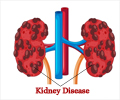There is an insufficient supply of deceased donor kidneys for transplantation. One solution is to increase the number of living donor kidney transplants.
There is an insufficient supply of deceased donor kidneys for transplantation. One solution is to increase the number of living donor kidney transplants.
A recent paper in the November issue of the journal Urology focuses on the insufficient supply of transplantable kidneys, strategies that have been developed to increase the number of living donor renal transplants, and the results of the adoption of these strategies at a single center. The purpose of this article is to inform the urologist who does not perform kidney transplants, about the magnitude of the end-stage renal disease (ESRD) problem.The authors reviewed the kidney transplant database of the Oregon Health and Science University, USA, for 3 periods of 12 months each, separated by 5 years, to show the trends in kidney transplant donor sources and the influence of biologically unrelated living renal donors, minimally invasive living renal donor surgery, transplantation of ABO-incompatible kidneys from living donors, and transplantation in spite of positive cross-matches on the numbers of renal transplants and 1-year kidney transplant survival rates at this center.
When results for 1993 were compared with 2003, the annual number of living donor renal transplants increased from 25 to 86, and the annual number of deceased donor renal transplants decreased from 108 to 63. The total number of kidney transplants increased by 12%. However, 1-year living donor kidney transplant survivals were not significantly different (94% for transplants done in 1993 vs 98% for transplants done in 2003).
In this program, the strategies of a standardized immunosuppression algorithm based on immunologic risk, the use of ABO-incompatible renal donors, the use of kidney transplants from living, genetically unrelated donors, the availability of laparoscopic donor nephrectomy, and transplantation across positive cross-matches were successful in maintaining the total number of renal transplants without decreasing short-term kidney graft survivals.
The authors suggest that these locally adopted strategies reflect national trends in living donor renal transplantation.











